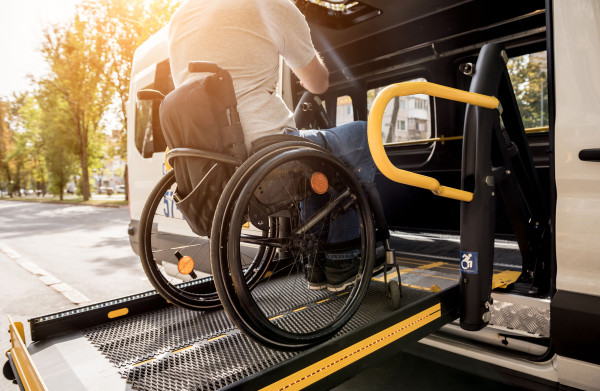Standard of the month – moving patients safely with NZS 8156 and others
International Day of Medical Transporters was 20 August, so we’re acknowledging the hidden heroes behind the scenes of saving lives, the standards used to create effective medical aids and services.

A specially adapted transport van
While there’s no doubt the people on the frontline are the real heroes of healthcare – from ambulance drivers, porters and medi-van drivers to organ transfer drivers, flight service personnel and stretcher carriers to name a few – we’re taking a moment to reflect on the standards behind these roles. Both patients and health workers need assurance that the equipment they require is reliable and ergonomically designed and that’s where standards play their part.
A history before standards
During World War 1 (1914–1918), the Royal Army Medical Corps introduced a day for medical transporters to recognise the unique function they provided in bringing people to safety. Ambulances have been used since the early days of warfare when wounded needed to be swiftly moved. Early forms were crude, bumpy, wooden horse-drawn litters and carts, eventually evolving into carriages in the late 1800s. It wasn’t until the twentieth century that dedicated motor vehicles were created for hospital use and thoughts of the standards of service started to come into effect.
Clinical safety, reliability, efficiency and effectiveness
Today medical transportation is a profession that uses a combination of skills and complex equipment to support the preservation of life. Equipment needs to be reliable and robust – you don’t want equipment failing when it is critical for the most vulnerable. It needs to be ergonomically designed to cater for the ranges of human dimensions so that nobody is disadvantaged. Here international standards exist to set a baseline for quality, to test and determine parameters for use while ensuring that the expertise of those who will use the equipment is factored in.
Let’s consider some examples of standards underpinning medical transportation.
NZS 8156:2019 Ambulance, paramedicine, and patient transfer services.
This recently revised standard brought together subject matter experts from 17 different New Zealand organisations representing healthcare and clinical provision, transportation, rescue and military, and academia. It provides the basis for measuring quality, safety and competency within New Zealand’s road ambulance and aeromedical services so what better standard for this month’s recognition.
Wheelchair-related standards
However, many more standards exist that support the wider role of medical transportation, particularly for those who require daily or long-term assistance and here we give honourable mentions. For the estimated 131 million wheelchair users in the world, their daily lives rely on equipment that needs to provide all-day comfort and accessibility and incorporates dozens of individual standards. Ergonomics for manual wheelchairs must consider the needs of those assisting too. Powered wheelchairs need to consider power supply, reliability, balance and propulsion. Fortunately, international standards exist developed by subject matter experts including:
- AS/NZS 3695.1:2011 Wheelchairs – Part 1: Requirements and test methods for manual wheelchairs
- ISO 7176-4:2008 Wheelchairs – Part 4: Energy consumption of electric wheelchairs and scooters for determination of theoretical distance range
- ISO 7176-5:2008 Wheelchairs – Part 5: Determination of dimensions, mass and manoeuvring space
- ISO 7176-28:2012 Wheelchairs – Part 28: Requirements and test methods for stair-climbing devices
Standards exist to consider the individual components too, for examples those that focus solely on the point of contact – the seating – considering pressure points and material to protect patients from sores developing or moisture build-up and discomfort:
- ISO 16840-6:2015 Wheelchair seating – Part 6: Simulated use and determination of the changes in properties of seat cushions
- ISO 16840-11:2022 Wheelchair seating – Part 11: Determination of dissipation characteristics of sensible perspiration into seat cushions
- ISO/TR 16840-9:2015 Wheelchair seating – Part 9: Clinical interface pressure mapping guidelines for seating
- ISO/TS 16840-14:2023 Wheelchair seating – Part 14: Concepts related to managing external forces to maintain tissue integrity
These are just a range of standards that show the attention to detail underpinning commonly used equipment. So, as we acknowledge those heroes helping us when we are most in need this International Day of Medical Transporters, let’s also think about the many hours given by hundreds of technologists and medical practitioners to design and determine the standards that contribute to freedom, safety and accessibility or lifesaving rescues.
